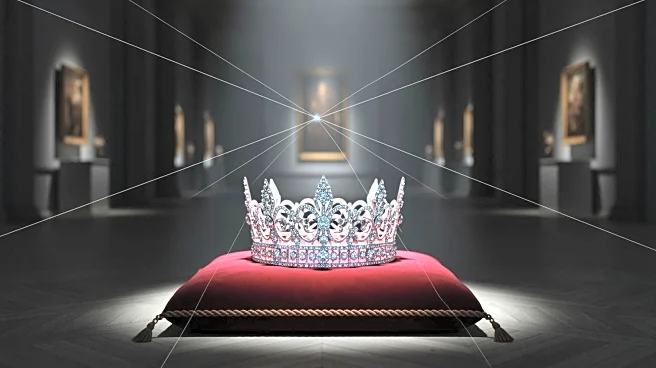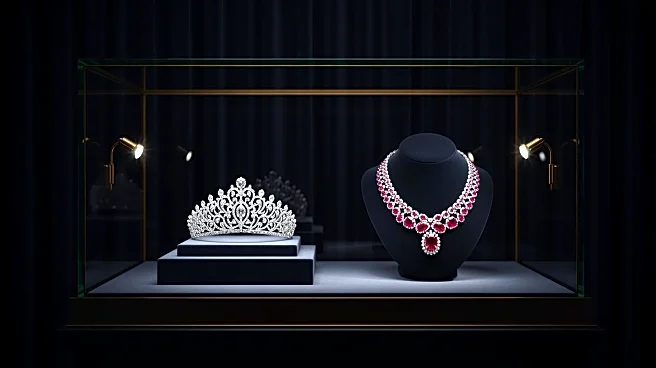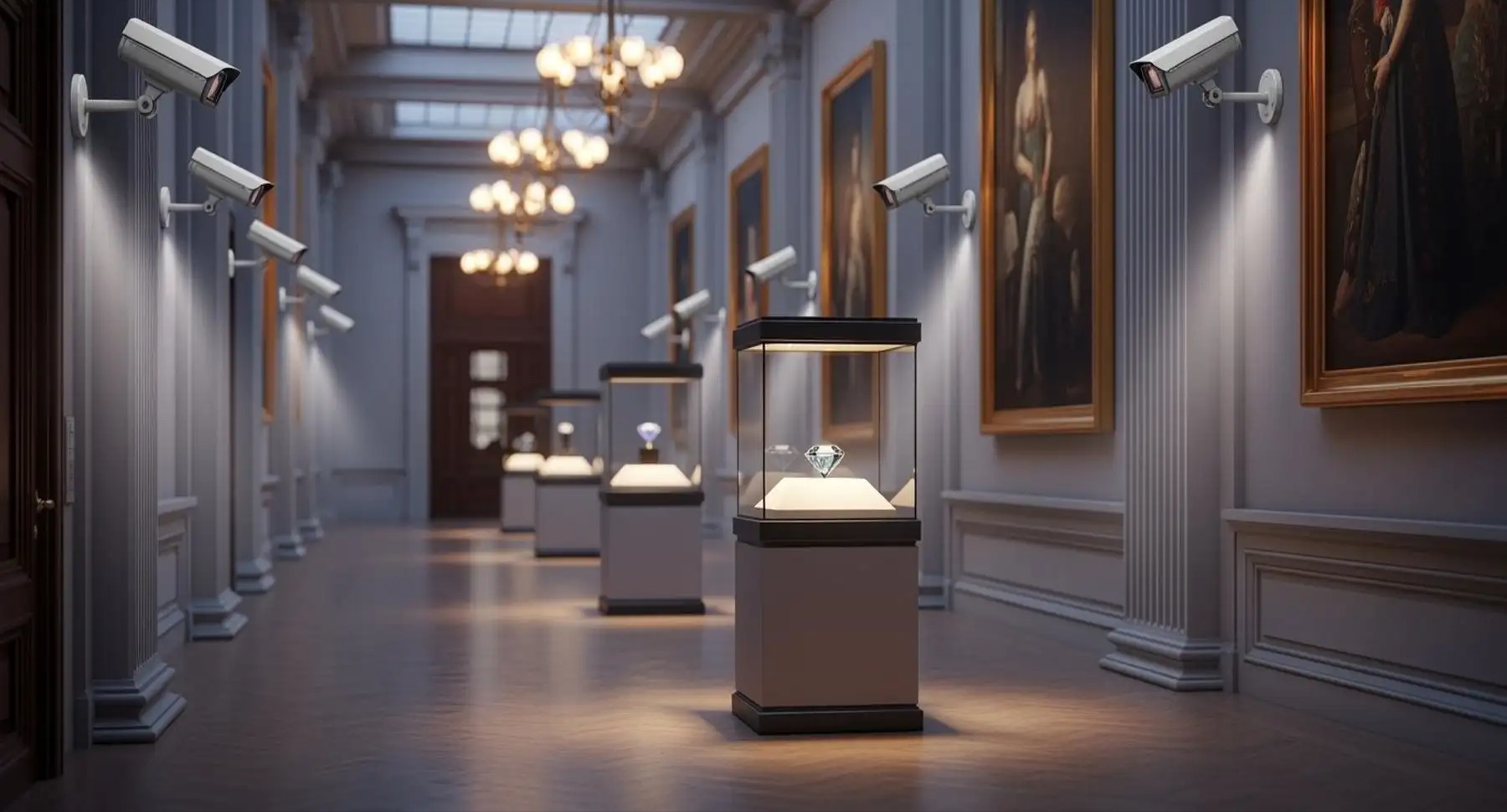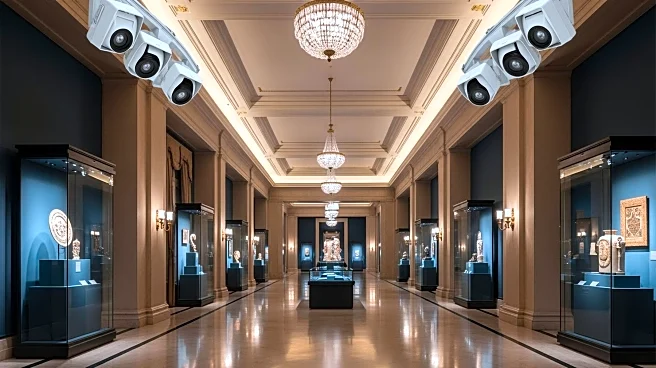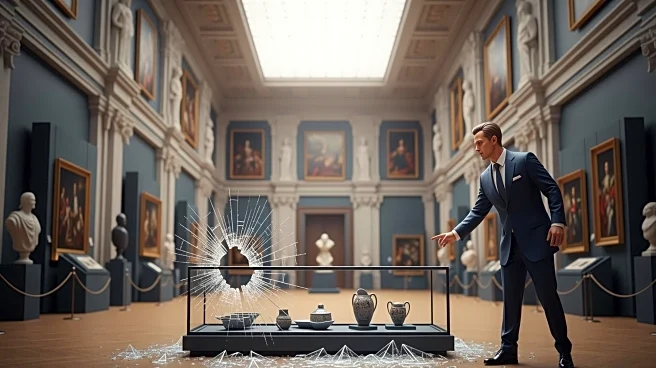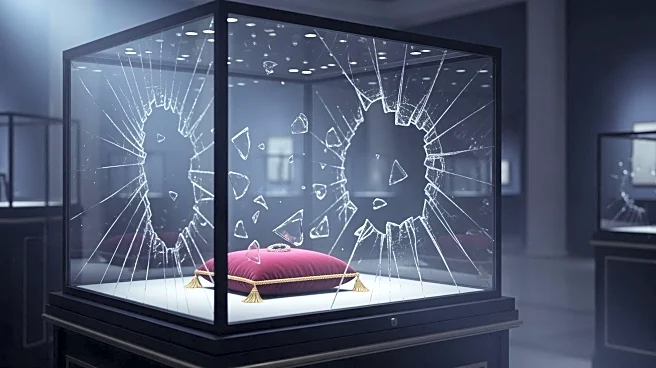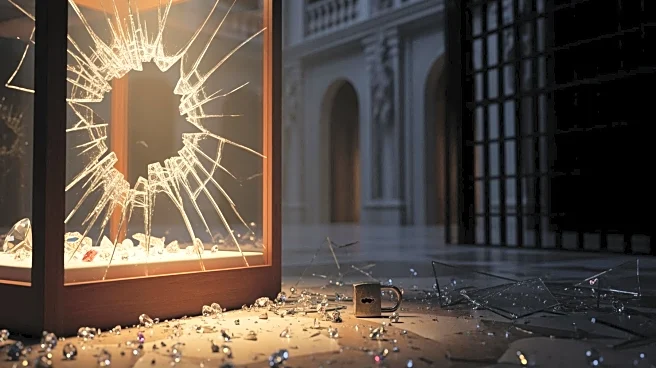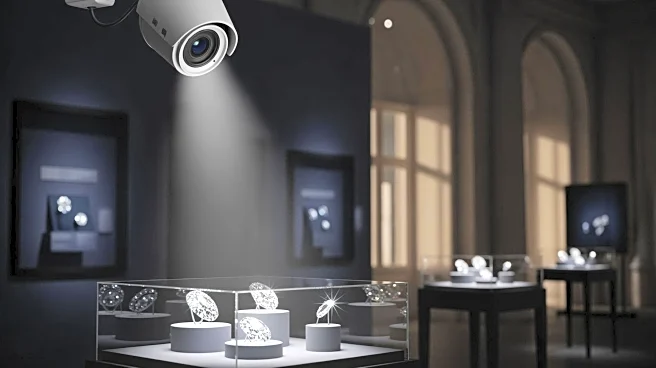What's Happening?
French police have arrested suspects linked to the theft of crown jewels from the Louvre museum. The heist involved a daylight raid on the Apollo Gallery, with thieves escaping with jewelry worth tens of millions. The suspects, known to police, were tracked
using DNA evidence and arrested as one attempted to leave the country. The theft has exposed security failings at the museum, prompting a manhunt for additional suspects.
Why It's Important?
The theft of crown jewels from the Louvre highlights vulnerabilities in security at one of the world's most famous museums. The incident raises concerns about the protection of cultural heritage and the effectiveness of security measures. The arrests demonstrate the capabilities of law enforcement in tracking and apprehending suspects, but the ongoing investigation underscores the challenges of preventing such high-profile crimes. The situation may lead to increased scrutiny of museum security protocols and international cooperation in cultural preservation.
What's Next?
Authorities will continue to search for additional suspects and work to recover the stolen jewels. The investigation may lead to changes in security measures at the Louvre and other cultural institutions. The incident could prompt discussions on international collaboration in protecting cultural heritage and preventing art theft. Stakeholders, including museum officials and law enforcement agencies, will likely review and enhance security protocols.
Beyond the Headlines
The theft raises ethical questions about the motivations behind art crime and the impact on cultural heritage. The use of advanced technology in tracking suspects reflects the evolving nature of law enforcement and the challenges of modern crime prevention. The situation underscores the importance of safeguarding cultural assets and the role of international cooperation in addressing art theft.


